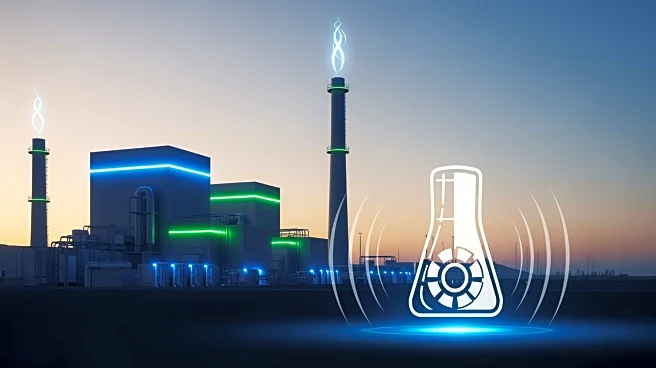What's Happening?
The UK government has announced Wylfa on Anglesey as the site for its first small modular nuclear reactor (SMR), a project expected to create thousands of jobs in North Wales. The initiative, backed by
over £2.5 billion, is part of the UK's strategy to generate 25% of its energy from nuclear sources by 2050. The project will be delivered by Great British Energy – Nuclear (GBE-N), with Rolls-Royce SMR providing the initial three reactors. The site could eventually host up to eight reactors. Early site activity is scheduled for 2026, with power expected to be supplied to the grid by the mid-2030s. The government has reformed planning rules to facilitate SMR deployment on various sites, aiming to support energy security and industrial growth.
Why It's Important?
This development is significant as it represents a major investment in the UK's clean energy strategy, potentially reducing reliance on fossil fuels and contributing to net-zero targets. The project is expected to support up to 3,000 jobs, boosting the Welsh economy and providing secure energy for future generations. The SMR program also has export potential, with Rolls-Royce already securing a deal with Czechia. The initiative underscores the UK's commitment to large-scale infrastructure projects and its ambition to lead in nuclear energy production.
What's Next?
The government plans to continue identifying sites for further nuclear development, with a report expected by autumn 2026. The Wylfa project is part of a broader civil nuclear roadmap, which includes accelerated work on carbon capture, hydrogen production, and grid upgrades. Collaboration with industry will be crucial to maximize benefits, requiring clear pipelines, realistic timescales, and procurement routes that allow SMEs and major contractors to compete.
Beyond the Headlines
The Wylfa project highlights the UK's strategic focus on energy security and industrial growth. It also reflects a shift towards modular construction approaches to minimize disruption and reduce risk. The initiative could set a precedent for future nuclear projects, emphasizing the importance of government-industry collaboration in achieving ambitious energy goals.











